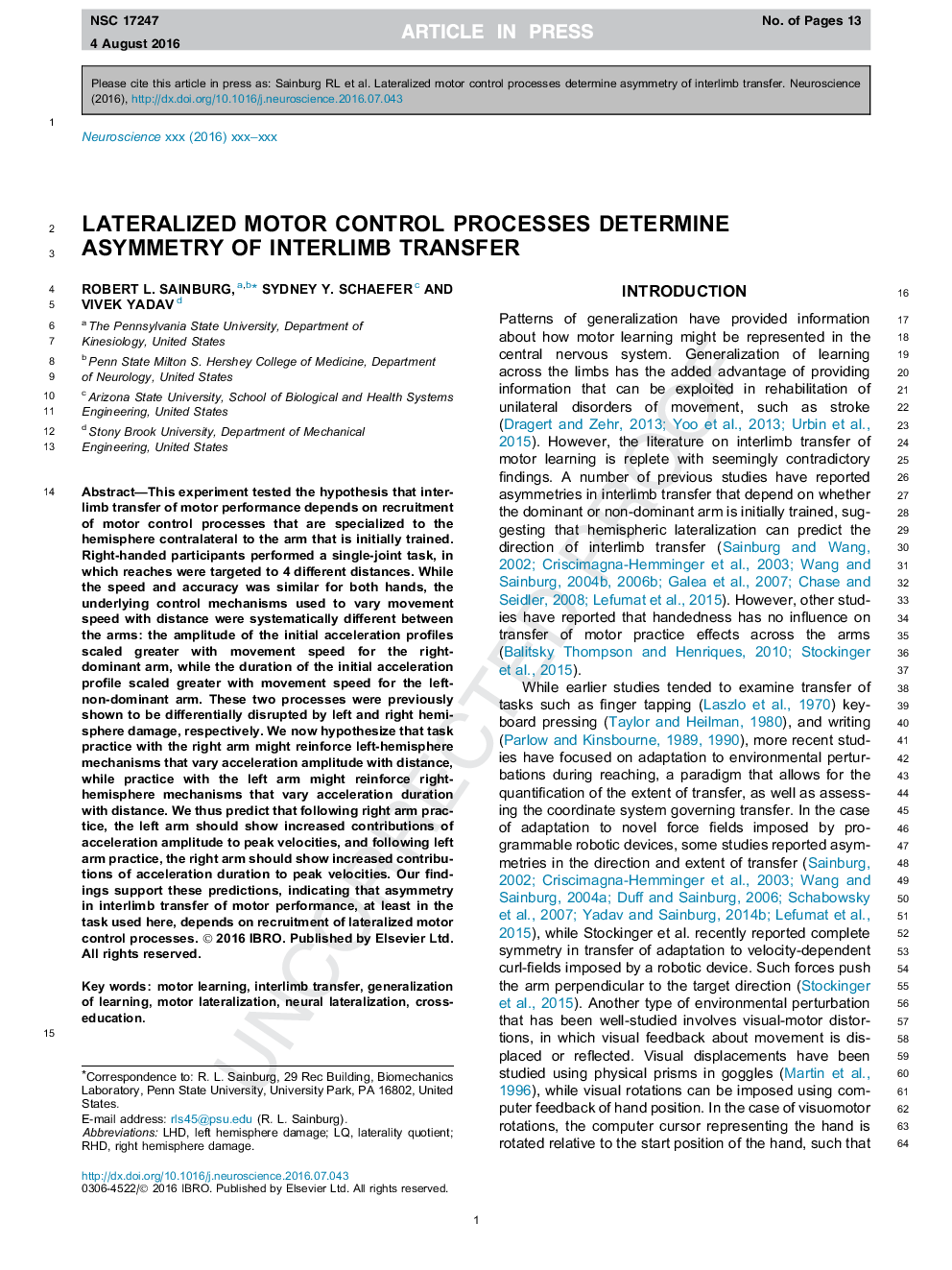| Article ID | Journal | Published Year | Pages | File Type |
|---|---|---|---|---|
| 6270759 | Neuroscience | 2016 | 13 Pages |
Abstract
This experiment tested the hypothesis that interlimb transfer of motor performance depends on recruitment of motor control processes that are specialized to the hemisphere contralateral to the arm that is initially trained. Right-handed participants performed a single-joint task, in which reaches were targeted to 4 different distances. While the speed and accuracy was similar for both hands, the underlying control mechanisms used to vary movement speed with distance were systematically different between the arms: the amplitude of the initial acceleration profiles scaled greater with movement speed for the right-dominant arm, while the duration of the initial acceleration profile scaled greater with movement speed for the left-non-dominant arm. These two processes were previously shown to be differentially disrupted by left and right hemisphere damage, respectively. We now hypothesize that task practice with the right arm might reinforce left-hemisphere mechanisms that vary acceleration amplitude with distance, while practice with the left arm might reinforce right-hemisphere mechanisms that vary acceleration duration with distance. We thus predict that following right arm practice, the left arm should show increased contributions of acceleration amplitude to peak velocities, and following left arm practice, the right arm should show increased contributions of acceleration duration to peak velocities. Our findings support these predictions, indicating that asymmetry in interlimb transfer of motor performance, at least in the task used here, depends on recruitment of lateralized motor control processes.
Keywords
Related Topics
Life Sciences
Neuroscience
Neuroscience (General)
Authors
Robert L. Sainburg, Sydney Y. Schaefer, Vivek Yadav,
